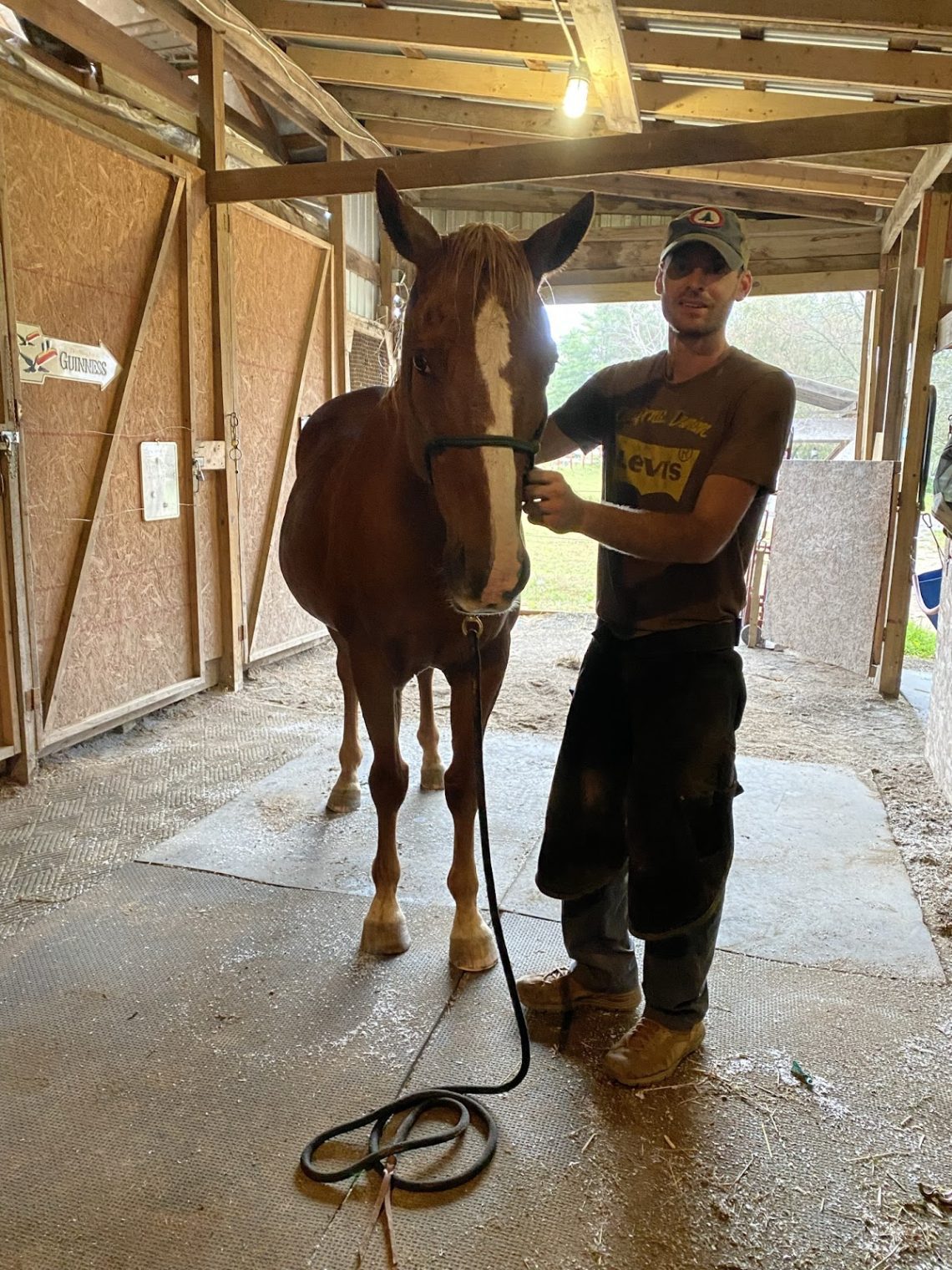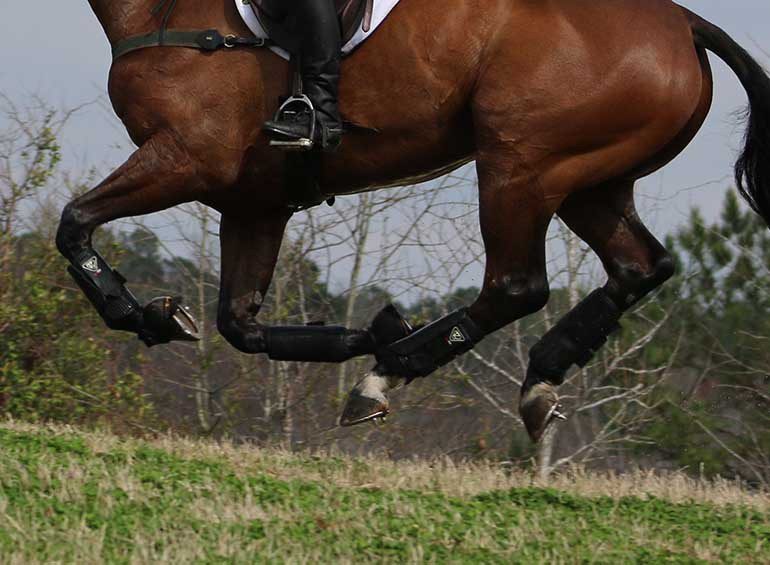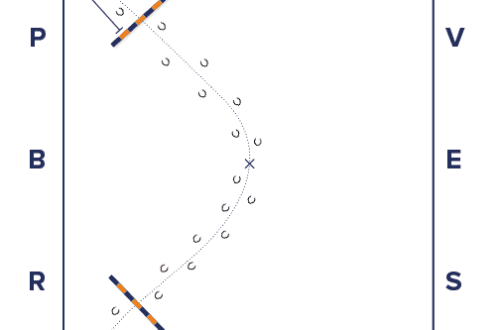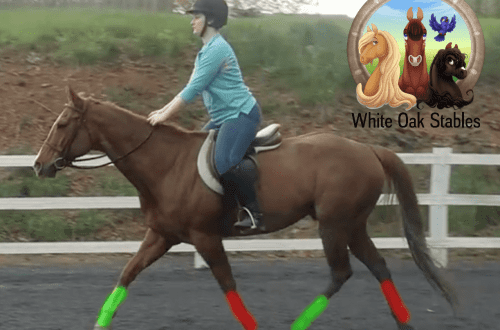
Six Ways to Become Your Farrier’s Favorite Customer

Finding a good farrier can be a difficult task. The best of them are worth their weight in gold. And if you’re lucky enough to find it, here’s what you can do to keep him (or her) on your team. Tips from the sought-after American blacksmith Scott Chandler.
Tip 1. Teach your horse to stand still while farrier
All farriers want the horse to behave calmly. Please train your horse so the farrier doesn’t have to. Scott sees a large number of clients treat their sport horses like pets or as their “stress therapy” after work. “If you want to have a pet, go get yourself a greyhound,” he said, pointing at me with an empty water bottle. Some owners feed too many treats to calm the horse instead of teaching it to stand still. The horse trains them to be a constant source of treats.
“The horse wiggles and twitches its legs, and mom gives it a treat. More owners should use the stick instead of the carrot and their horses will behave much better,” says Scott. This is not about encouraging beating or excessive cruelty. Just a quick, consistent correction when needed. Working with an agitated animal that won’t stand still makes the shoe much longer and is a safety risk for the farrier and horse.
Scott would like grooms or assistants to be more experienced. If the groom is nervous, the horse will notice it. Work with the horse often so that he lifts his legs confidently and stands firmly in place.
Tip 2. Organize a comfortable place to work
Farriers would like to have a dry, clean, safe work area, not standing in six inches of dirt, or in a cramped aisle between wheelbarrows and forks.
“There are places where I had to move wheelbarrows full of manure and organize the whole stable passage,” says Scott. – How can I work safely? If a horse steps on a wheelbarrow and gets tangled, they’ll say it’s my fault.”
A level, swept area with several meters of space around the horse is ideal.
Tip 3: Prepare your horse and don’t leave him unattended
Your meeting is often scheduled several weeks in advance, so your horse should be ready. “Don’t bring a horse dripping with sweat or water. A wet horse is slippery, difficult to keep a foot on, and increases the danger in an already risky job.” – Scott says. Just don’t wait until you see a blacksmith truck parked in the driveway, to bring the horse from the back of the big levada. The horse should already be inside, clean and dry. For young horses with excess energy, it may be good to walk or work out before shoeing. The horse can stand better when a little tired. Again, work it out before your farrier arrives.
When your farrier is working, you can stand next to the horse’s head and do your best to help the horse stay still. Do not use this time to brush or trim your horse. Scott says this has happened a few times: “The owner just starts cleaning the dirty, hairy horse, leaving all the dirt to fall on me.” A couple more owners tried to shave their horses.
While the farrier is working, please stay close. If the vet has arrived, or your friend is calling, or whatever, try not to leave the horse unattended, especially if the animal is not standing well.
Tip 4: Respect your farrier’s time
“Another horse” is a common phrase heard by many farriers. Just another horse! Many extra horses are added to each stable throughout the day and this makes it nearly impossible to keep to a schedule. Why is your farrier late? “Another horse”, perhaps that’s why. Please let your farrier know at least two days in advance if you need to add a horse to his list, allowing him to communicate with other clients in advance and organize his day accordingly. If a horse is added unexpectedly, please politely ask the farrier if he can take it on today, and remember that it may be necessary to schedule shoeing for a later time. You are not the most important customer in the world, remember that he has many other owners who also need him. And maybe, just maybe, he would like to come home for dinner with his wife or attend his child’s football game. In an emergency, he will be there or will do his best to help. But unless it’s an emergency, remember that he has other responsibilities, just like any hardworking person. Your farrier will also be very grateful if you call to cancel his visit in advance. Not when he has already turned towards you.
Keep in mind, a good farrier can be busy. If he is qualified, well educated and experienced, he is likely to be in high demand. Making a new appointment may take days or weeks, or may require you to move your horse to a more convenient location if you are on a tight schedule. As Scott remarked, “If you call a new farrier and he’s completely free next week… maybe he’s not busy for some reason, you know what I mean?”
Tip 5. If your farrier is a professional, respect his knowledge
Scott loves to share his knowledge about horse hooves, but he finds it very difficult to deal with owners who “read” a lot on the Internet. Armed with the internet and watching YouTube videos, this owner now knows all about horse shoeing and tells the farrier how to do his job. Scott says that many people ask him a question or want his opinion on a particular issue, but when they don’t like his answer, they keep asking others (Facebook friends, a neighbor, five different vets…) until they get an answer that they wanted to hear. Your farrier specializes in horse hooves, if you do not respect his recommendations, why are you working with him? You partner with your farrier because you trust and value his experience, so if he advises you to groom your horse in a certain way, it’s probably a good idea.
For example: Here in tropical Florida, Scott sees many horses with weak, soft hooves. He recommends to the owner: “Please don’t send him out for a walk this summer in a swampy back field. Find a drier levada and keep him in a dry stall with sawdust to help dry his feet. They are wet and soft and you will lose a lot of shoes.” The owner did not heed this advice, sending the horse back into the swamp, as a result of which the horse took off the horseshoes, lost half of the hoof, and now the horse needs expensive forging with glue. An ounce of prevention is worth a pound of cure.
Recently there has been a trend towards “natural hoof care” and many owners want their horses to work out without shoes. There is nothing wrong with this, the main thing is that the horse is strong, comfortable, and the legs can withstand the load. However, if the hooves wear excessively, or shoeing is required for your sport, your farrier may recommend horseshoes. He doesn’t do it to make more money, or because he thinks it’s a stupid idea to work without shoes. The farrier takes care of your horse’s best interests.
Tip 6. Improve your knowledge
Scott blames a lack of education for many of his clients’ mistakes. “They just don’t know any better,” he says. They don’t know about the problem or don’t think to look at their horses’ hooves and notice the problem. Proper organization may require more effort, more time, and sometimes more money. Many owners come to the stable for a short time and do not view their horse as a high performance athlete. Owners are lazy, they don’t solve minor problems. “Would you drive forever if your car had a warning light on? No, you’ll fix everything. So why do you think you can ride a horse with a problem forever?” – asks Scott.
Horses need proper work, grooming, good nutrition, good treatment and good hoof care. All of these things need to be coordinated in order to work at their best. It’s easy to blame the farrier or look for the cure in a feed supplement, but sometimes it comes down to more work and better care. A true equestrian understands the meaning and needs of their horses.
Owners who want knowledge – ask the farrier! If he is like Scott, he will be happy to discuss his work and how hard he works to make every foot better; why there is an extra nail here, or why we leave this wall of the hoof free.
Source: eventingconnect.today





